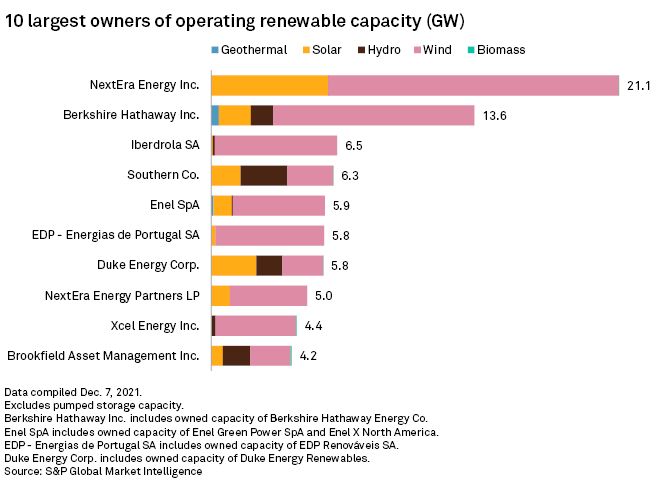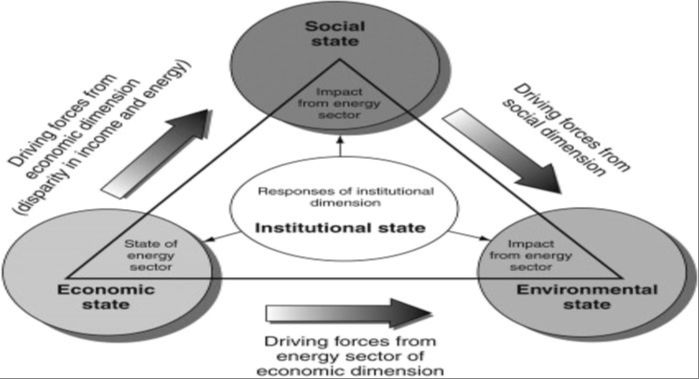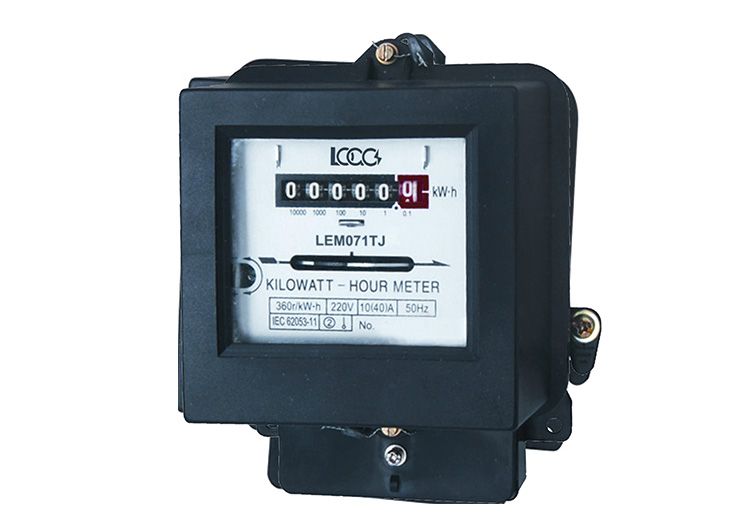What Is The Largest Producer Of Renewable Energy Company?

Renewable energy is playing an increasingly important role in the global transition from fossil fuels to sustainable energy sources. Knowing which companies lead the renewable energy sector provides insight into key players driving this energy transition. The largest renewable energy companies are investing billions into clean power and helping accelerate the growth of renewable energy worldwide. Given the urgent need to reduce greenhouse gas emissions and mitigate climate change, understanding the major producers driving increased renewable energy capacity offers perspective on progress being made toward a low-carbon future.
Additionally, renewable energy’s share of global electricity generation reached record highs in 2021, surpassing 30% for the first time according to the International Energy Agency (IEA). However, significant work remains to scale renewables further and phase out fossil fuel reliance. Identifying the top renewable energy companies highlights the corporations at the forefront of renewable energy growth and the geographic regions where renewables are expanding most rapidly. Given renewables’ central role in energy security and the clean energy transition, the largest renewable energy producers represent essential players in building a sustainable energy future.
What is Renewable Energy?
Renewable energy is energy that comes from sources that are naturally replenished over time. The most common sources of renewable energy are sunlight, wind, water, plants, and geothermal heat. Unlike non-renewable sources like fossil fuels, renewable sources are constantly and naturally replenished, which makes them sustainable over the long term.
According to a report from the Croatian Energy Act, renewable energy sources are defined as “energy resources preserved in nature that can be fully or partially renewed.” This includes sources like solar, wind, hydro, biomass, and geothermal energy [1]. The key aspect that makes these sources renewable is that they are naturally replenished over relatively short time spans.
In contrast, non-renewable sources like coal, oil and natural gas take hundreds of millions of years to form naturally. This means that for all practical purposes, non-renewable resources do not renew within a human lifespan. While natural gas is continually produced deep underground, it still takes thousands to millions of years to form, so it is considered non-renewable [2].
Largest Company by Revenue
According to Statista, the largest renewable energy company in the world by revenue in 2022 was Enel SpA, an Italian electric utility company based in Rome. Enel generated over $108 billion in revenue in 2022
Enel is one of Europe’s largest utilities in terms of market capitalization and has operations in over 30 countries worldwide. The company operates across the entire renewable energy chain, including hydroelectric, geothermal, solar, wind, and other renewable sources. Enel has over 46 GW of managed renewable capacity and is actively working to convert its portfolio away from fossil fuels. The company plans to be carbon neutral by 2050.
Some key facts about Enel SpA include:
- Founded in 1962, headquartered in Rome, Italy
- Over $108 billion in total revenue in 2022
- Approximately 70,000 employees worldwide
- Operates in over 30 countries across Europe, the Americas, Africa and Asia
- Leader in renewable energy with over 46 GW of renewable capacity
With its large size and focus on renewable energy, Enel SpA is well positioned to continue being one of the largest renewable energy companies globally. The company is making major investments to grow its wind, solar, hydroelectric and other zero emission generation sources.
Largest Company by Production Capacity
According to a report by GlobalData, the largest renewable energy company by production capacity in 2022 is China Three Gorges Corporation (CTG) [1]. CTG has an installed capacity of 223.4 GW, which includes hydropower, wind power, and solar power assets.
Key facts about CTG’s renewable energy business:
- Mainly focuses on hydropower, where it operates the world’s largest hydroelectric project – the Three Gorges Dam on Yangtze River in China.
- Also a major player in wind power with over 40 GW of installed capacity.
- Ranks 5th globally in solar power capacity with over 10 GW.
- Owns renewable energy assets across China, Brazil, Portugal and other countries.
- Majority owned by the Chinese government.
With its massive portfolio of hydro, wind and solar energy assets, CTG has cemented its position as the top renewable energy company globally in terms of installed capacity.
Largest Company by Geography
The leading renewable energy companies vary greatly by geographic region. In the United States, NextEra Energy is the largest producer of renewable energy with over 21,800 megawatts of wind, solar, and energy storage projects across the country (Top 10: Renewable Energy Companies in the USA – Energy Digital). NextEra operates in 30 states and Canada. Other major US renewable companies include Berkshire Hathaway Energy, Avangrid, Duke Energy, and Dominion Energy.
In Europe, the largest renewable energy company is Iberdrola, based in Spain. Iberdrola has over 35,000 megawatts of renewable capacity, with wind being their largest source. Other major European companies are Orsted, RWE, EDP Renovaveis, and Enel Green Power (10 Biggest Renewable Energy Companies in the World – Investopedia). Many European countries like Denmark, Germany, and Spain have invested heavily in wind and solar power.
The leading renewable company in Asia is China Three Gorges Corporation, a state-owned utility company in China. Other major Asian companies are NTPC Limited in India and Korea Electric Power Corporation. China leads the world in total installed renewable energy capacity, mainly from hydro, solar, and wind sources.
In terms of global renewable energy production, the largest companies are NextEra, Enel, Iberdrola, Engie, and Orsted. While production is somewhat concentrated, there are renewable energy companies with a strong presence across multiple continents.
Renewable Energy Growth Trends
The renewable energy industry has experienced rapid growth over the past decade. According to the International Energy Agency (IEA), global renewable energy supply increased by close to 8% in 2022, reaching a share of over 27% of total global electricity generation (IEA).
Solar and wind power have been the primary drivers of this growth. The IEA projects that global renewable capacity additions could reach 550 GW in 2024, with solar PV additions continuing to increase and reaching over 320 GW. The share of renewables in global electricity generation is expected to reach 30% in 2024 (IEA).
Looking further ahead, renewable energy is projected to supply over 50% of global electricity by 2030 and close to 90% by 2050, according to BloombergNEF. Key factors driving this growth include declining costs, supportive government policies, and increased investments (Deloitte).
However, grid integration, policy uncertainty, and supply chain challenges pose risks to the pace of renewable expansion. Sustained growth will require addressing these barriers through supportive regulations, infrastructure development, and technological innovations.
Challenges
The renewable energy industry faces several key challenges that can impact operations and profitability (Source 1).
Operationally, renewable energy projects face risks like equipment failure, supply chain disruptions, and weather or climate events that can hamper production (Source 2). Maintaining and repairing equipment like wind turbines or solar panels can be costly and lead to lost revenue from downtime.
Financially, renewable energy projects require major upfront investments that take years to recoup. Fluctuating electricity prices make revenues unpredictable. Fossil fuel subsidies also uneven the playing field (Source 2).
Regulatory uncertainty around incentives like tax credits as well as permitting and grid access also hampers growth. Navigating different regulations across regions is complex for companies (Source 2).
Investments and Acquisitions
The renewable energy sector saw significant investment and M&A activity in 2022 as companies looked to expand and consolidate. According to FT Consulting, over $250 billion was invested in renewable energy companies globally in 2022, with over $100 billion in M&A activity in the US alone.
Some notable acquisitions in 2022 include:
- Blackrock acquiring a majority stake in Jupiter Power for $3.5 billion (https://www.fticonsulting.com/insights/articles/us-renewable-energy-ma-review-2022-outlook-2023)
- Enbridge acquiring Tri Global Energy for $270 million in September 2022 (https://www.mintz.com/insights-center/viewpoints/2151/2022-11-10-energy-sustainability-ma-activity-november-2022)
Private equity firms were also very active, investing a record $26 billion in US renewable companies in 2022 according to S&P Global Market Intelligence. This demonstrates the continued strong interest in the renewable energy sector from investors and corporations looking to tap into the sector’s growth opportunities.
Impact and Benefits
Renewable energy provides substantial environmental and social benefits compared to fossil fuels. Renewable energy sources like solar, wind, and hydropower generate electricity without emitting greenhouse gases that cause climate change. Widespread adoption of renewables can significantly reduce air pollution and related health problems. According to one estimate, doubling renewable energy generation could avoid up to 3.6 million premature deaths globally by 2050.
Increasing renewable capacity also enhances energy access and security for communities. Locally produced renewable electricity can support economic development in rural areas through job creation, without reliance on imported fossil fuels. Renewables allow countries to harness domestic energy sources, rather than depending on global oil and gas markets. The modularity and distribution of resources like solar PV enhances the resilience of energy systems as well.
Furthermore, the renewable energy sector directly employs over 12 million people today, across manufacturing, installation, operations, and other jobs. These are often skilled technical roles located close to project sites, providing socioeconomic opportunities worldwide. With supportive policies, the IRENA estimates that renewables could employ over 40 million people by 2050.
Conclusion
In summary, renewable energy companies are playing a pivotal role in the global transition to clean energy. The largest producers, such as NextEra Energy and Enel, are rapidly expanding their renewable capacity and investing billions into new projects. Key growth trends include the falling costs of wind and solar technology, favorable government policies, and increased corporate and investor demand for clean energy. While challenges remain around intermittency and grid integration, the outlook is positive overall. Renewable energy is expected to comprise an ever-greater share of the global energy mix, with capacity projected to grow exponentially in the coming decades. Companies at the forefront stand to benefit enormously while making a positive impact on climate change mitigation.
The renewable energy industry has strong tailwinds propelling growth into the future. Companies like NextEra Energy, Enel, Iberdrola and others are well-positioned to capitalize through their massive scale, investments and acquisitions. Though intermittency and transmission remain challenges, the economic competiveness of wind and solar continues to improve. With supportive government policies and surging corporate demand, renewable energy companies have a bright future ahead as they spearhead the transition to a low-carbon economy.







